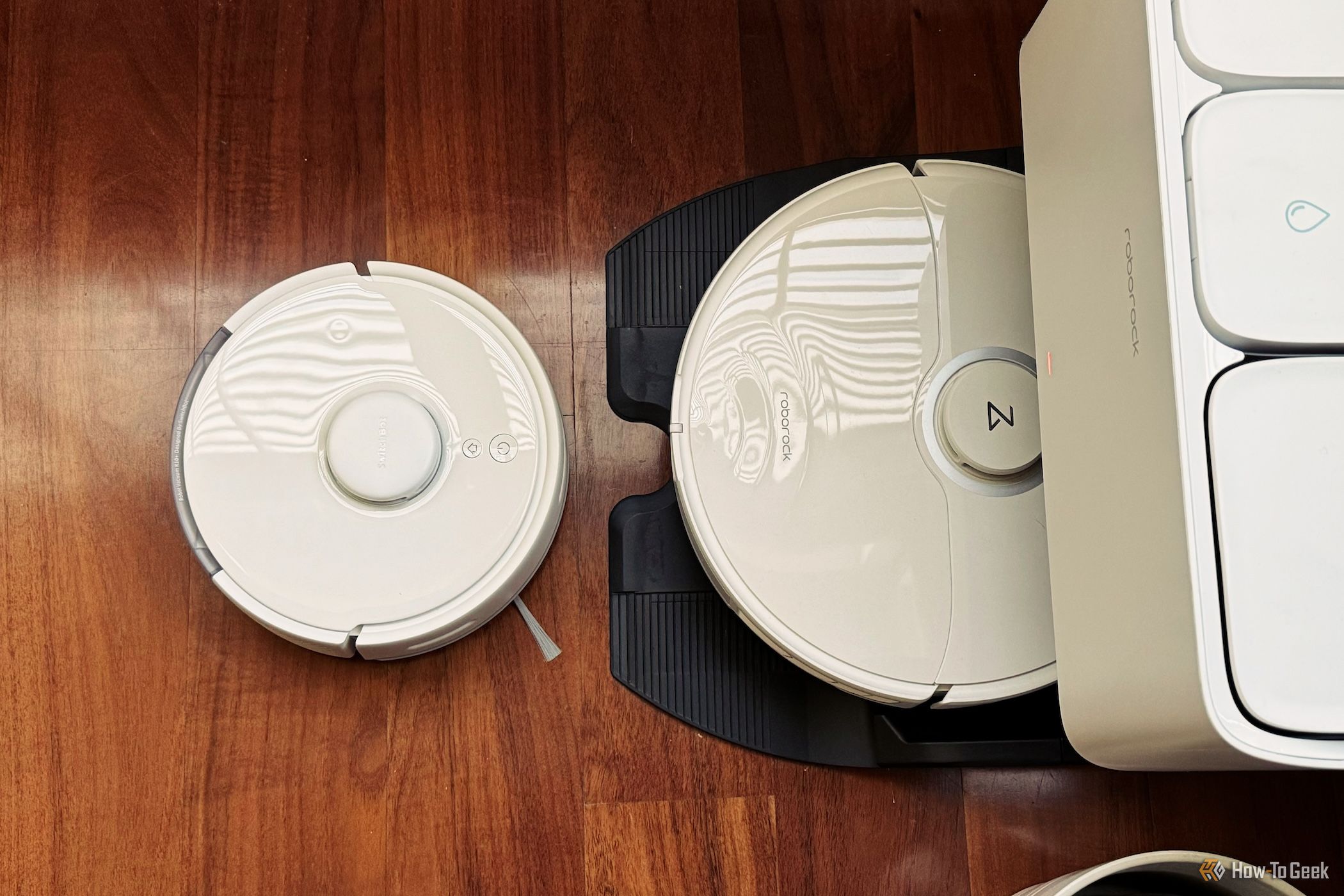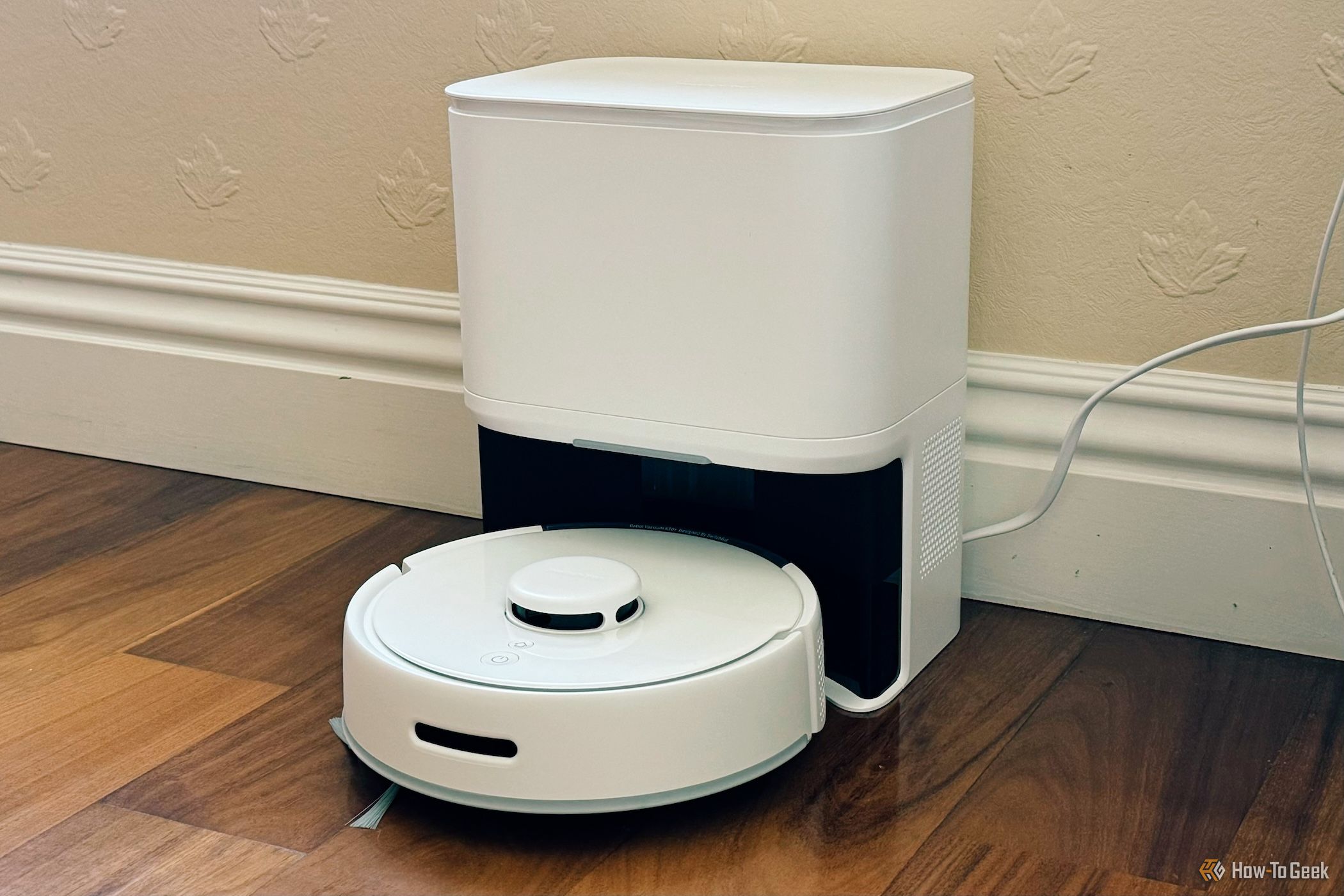Key Takeaways
- The SwitchBot Mini K10+ robot vacuum is compact, making it easy to maneuver into tight spaces.
- It comes with a variety of features typically found in more expensive robot vacuums, such as 2,500Pa max suction, 10 saved maps, and a 150-minute battery life.
- While its cleaning performance is satisfactory, especially on hardwood floors, it may struggle with certain obstacles like shag carpeting and thin metal end tables. It also has limited mopping capabilities.
The SwitchBot Mini K10+ robot vacuum is no slacker when it comes to features, but its defining quality is its petite size. Autonomous cleaners are supposed to be round and about 13 inches wide—or so it looked to be determined. The Mini K10+ comes in at 9.7 inches. Changing a vacuum’s size addresses some concerns, but unfortunately, it doesn’t fix all the inherent problems with these devices.

SwitchBot Mini Robot Vacuum K10+
SwitchBot mini robot vacuum K10+ is compact and offers a 50% smaller size than traditional vacuums, enabling easy maneuvering into room corners and under tables.
- Dimensions
- 9.76 x 9.76 x 3.62in (248 x 248 x 91.95mm)
- Battery Life
- 150 min runtime
- Weight
- 5.06lbs
- Connectivity
- Wi-Fi
- Integrations
- Google Assistant, Amazon Alexa
- Dust Bag Capacity(L)
- 4L base station capacity
- Cleaning Modes
- Four suction levels
- Suction Power
- 2,600Pa max
- Mop
- Disposable wet wipes
- Small and compact
- Good cleaning performance compared to similarly priced robots
- Feature-rich app with lots of automation options
- Mopping is very limited
- Quietest setting is less effective at cleaning
Full of Features in a Small Package
The thought process here seems to be that shrinking down a robot vacuum’s size so that it can slide through chair legs more freely will allow it to pick up more dirt. If it’s not as wide and bulky, then it might not bump into common obstacles or get stuck in the same ways as the bigger ones.
While I found that the Mini K10+ did have an easier time getting around in certain tight spaces, it ultimately was still foiled in a lot of the same places vacuums from Roborock or Evovacs were. Shag carpeting and thin metal end tables in my house have been tough to overcome, even for LiDAR-equipped robots.
Beyond the robot's size and LiDAR inclusion, the Mini K10+ features 2,500Pa max suction, 2cm of climb, a removable mop, 10 saved maps, carpet detection, 150-minute battery life, and a 48dB volume level.
These are all features that have typically been relegated to high-end robot vacuums. While the Mini K10+ isn’t cheap at $499, it also does provide a good deal of capabilities for its price point.
A small autonomous vacuum with a huge base station wouldn't make sense. So I was delighted to see that the dock, which collects the dust and recharges the unit, was only 12.7 inches tall and 10.2 inches wide. It was downright tiny compared to some other base stations.
The Mini K10+’s home can supposedly collect dust for 70 days in its four-liter compartment. It, unfortunately, doesn’t have anything to do with mopping or water—only dust collection.
Vacuuming Performance Was Only Okay
The SwitchBot Mini K10+ might be able to do a lot with its small stature, but the key for this product is its cleaning performance. In general, it was satisfactory. It seemed to pick up obvious debris from my hardwood floors with a high success rate. I let it clean, and when I looked again, the floors were cleaner than I had left them.
To get more specific, however, I conducted several tests, including one with rice to simulate larger crumbs and crushed-up Cheerios to simulate finer dirt. These results weren't overly impressive on their own but solid when compared to other robot vacuums.
The test debris was put inside the taped-off area so that I could see how much material the vacuum displaced while trying to clean the space. With a single pass on the standard default suction level, the Mini K10+ left about a dozen grains of rice behind. This looked to be primarily because it was flinging the bits around instead of sweeping them into its suction path rather than not sucking up the pieces it ran over.
With the same standard suction level, the vacuum did a better job of collecting more of the crushed-up cereal dust on a single pass. It didn’t get everything, but most of it. With a second pass of the area, it cleaned up all the remaining bits.
If you’re willing to let the Mini K10+ run daily, you should be able to let it do a faster, single pass at the standard suction level and have it keep away most of the visible dust and crumb bits across your floors. If you don’t want to run the vacuum as often, you will need to have it do multiple passes or use the highest (and loudest) suction level. You can set the suction level to the strongest level for all tasks, but I found the noise to be a little too intense while I was working at home.
Although it's fairly common, I was glad to see the ability to do an area or spot clean with this vacuum. This makes targeting a spill or incident much more manageable. So needing to run two passes at a higher suction level might only take three or four minutes.
This Is Not a Mopping Device
SwitchBot advertises the Mini K10+ as capable of vacuuming and mopping. That’s technically true but also a little misleading. The product comes with a pack of wet wipes, essentially, which get attached to a plastic piece that has to be snapped onto the Mini K10+ manually.
There’s no clean or dirty water involved in this mopping process, but the whole thing is equivalent to dragging a damp cloth around the floor. The wet wipe gets attached to the vacuum over its suction spot so no debris is sucked up while the mop attachment is connected.
I don’t think this mode is completely useless, but it will only be useful for the most minor of tasks. I did like being able to toss the damp cloth after use and not having to deal with dirty water, but I would not buy this vacuum for mopping. It’s too manual and doesn’t scrub.
A Full-Featured App That Goes Beyond Vacuuming
Software for robot vacuums is a wild playground full of experimentation. There’s a lot of information that needs to be conveyed on a phone’s limited screen size. SwitchBot’s app for controlling the vacuum, available for iPhone and Android, does an admirable job in broad, sweeping terms.
I could navigate it without too much trouble, finding things like scheduling and modes on my own. SwitchBot’s app is a hub for all of its smart home products, so a lot of the space in the app is dedicated to automation and letting all of the company’s products connect together.
I used a hint of that functionality to set up basic automations, even without other SwitchBot products present. Most of it made the cleaning process more complex than I wanted it to be, but I did like that the abilities were there.
The LiDAR mapping worked well and seemed similar to most other high-end vacuums. It saw chair legs and made detailed room layouts in the app. There were a few times I noticed the vacuum bumping into furniture that was big and obvious. Its object detection seemed to be middle-of-the-road.
Price and Availability
The SwitchBot Mini K10+ retails for $499 but has been on sale for $50 off at times. It comes in white with a matching charging base station.
Should You Buy the SwitchBot Mini K10+ Robot Vacuum?
The SwitchBot Mini K10+ robot vacuum is a fine cleaner in its own right compared to other mid-priced options. It did okay on its own with minimal supervision and could be tweaked and managed to do a solid job if you’re willing to put in more effort.
It’s tempting to pick the small and cute robot vacuum over the bigger ones simply because of its appearance. I would recommend sticking to full-size vacuums for people with houses and typical floorplans. If you have a smaller room, apartment, or unique floorplan where a bigger unit won’t work, then the Mini K10+ is a worthy consideration.

SwitchBot Mini Robot Vacuum K10+
SwitchBot mini robot vacuum K10+ is compact and offers a 50% smaller size than traditional vacuums, enabling easy maneuvering into room corners and under tables.






